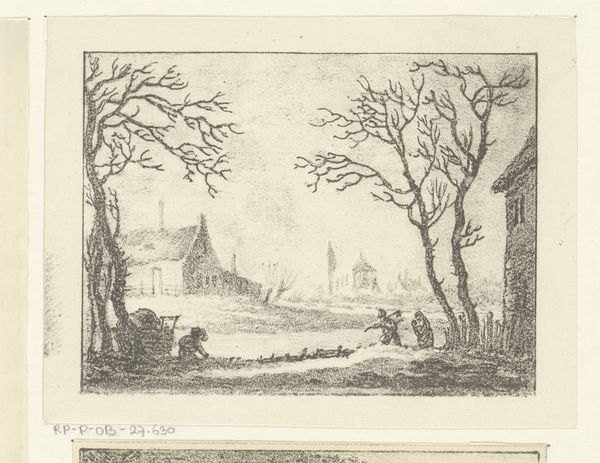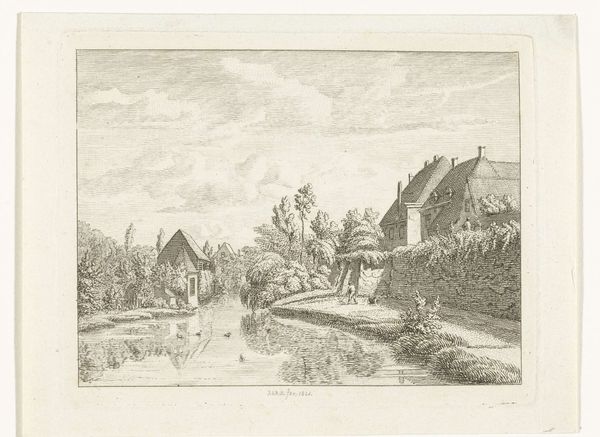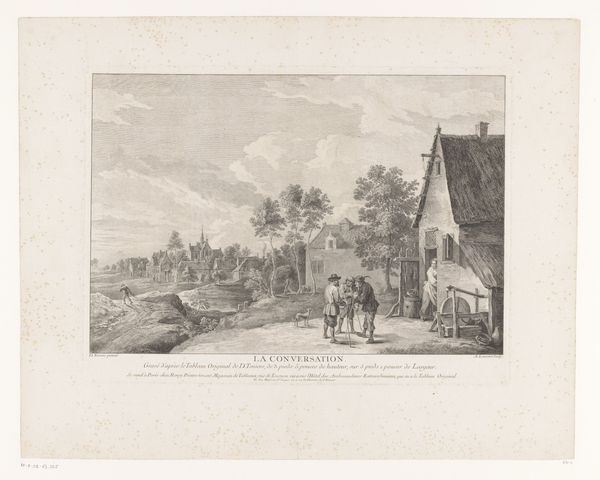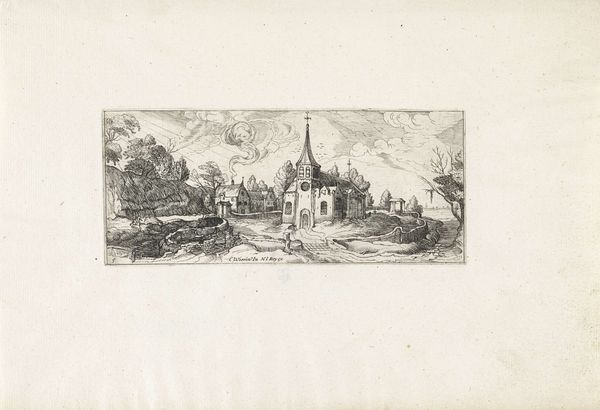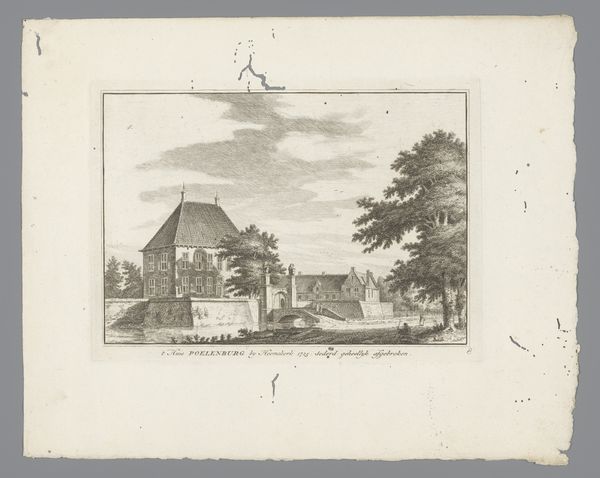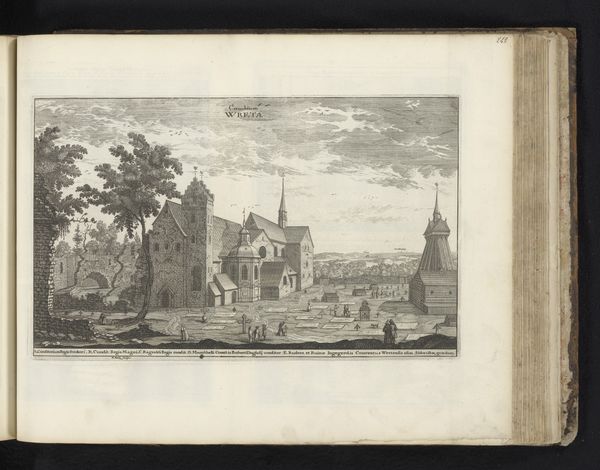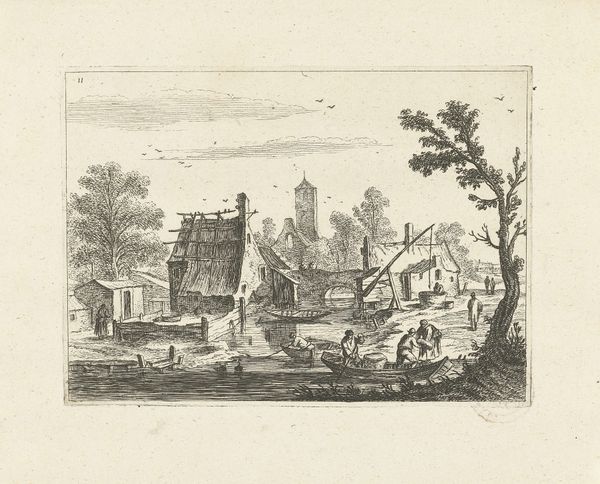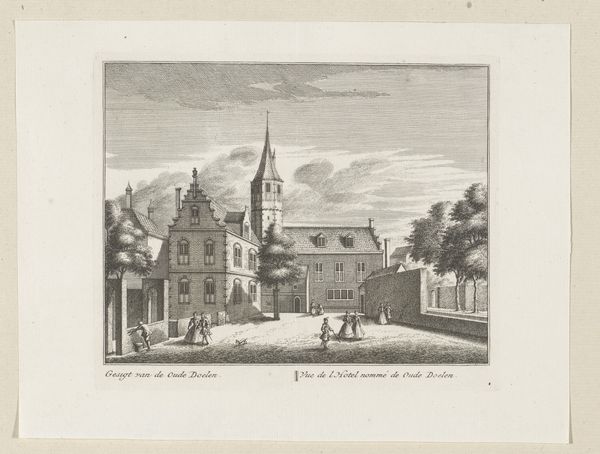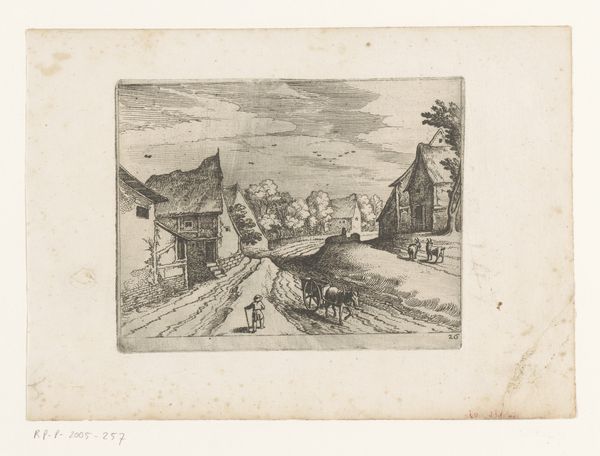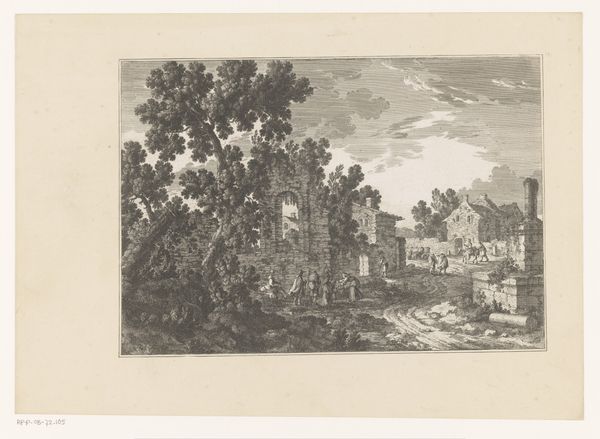
print, engraving
#
baroque
# print
#
old engraving style
#
landscape
#
cityscape
#
genre-painting
#
engraving
Dimensions: height 150 mm, width 211 mm
Copyright: Rijks Museum: Open Domain
Curator: Immediately, I'm struck by how still everything feels. There's movement implied—sheep being herded, boats on the river—but the scene emanates a certain quiet. Editor: Exactly. We’re looking at "View of the Oostpoort in Heukelum" by Antoine Radigues, an engraving dating from between 1750 and 1764. It's a fascinating example of Baroque cityscape rendered in print. What symbolic readings do you glean from its composition? Curator: The archway, I suppose, is the most obvious. It’s this heavy, somewhat imposing structure that both protects and confines. You can almost feel the weight of tradition, of the past bearing down on the everyday. But there’s such lightness and grace in the landscape itself… it’s a delicious contrast! Radigues understood how to evoke emotion through visual elements. The steeple touches the heavens. Editor: The Oostpoort itself is an interesting marker of civic identity, a liminal space. I imagine it must have held so much significance for locals going back and forth. What narratives could you infer by observing people passing through a gateway like this? Curator: Perhaps of journeys undertaken, merchants, families visiting each other… It almost certainly had a watch tower. I see it as the intersection of safety, control, and community. But what's even more captivating for me is this very ordinary image somehow becomes imbued with layers of feeling because the composition invites an interplay between memory and emotion. Editor: And the genre scene adds another layer. The people and animals exist on a smaller scale, emphasizing both the monumental nature of the architecture and the quiet lives lived within its shadow. Notice the engraving marks and how Radigues plays with light and shadow. Does it not appear timeless? Curator: Entirely! It’s the kind of piece that makes you pause and reflect not just on history, but on how little some fundamental human experiences actually change over time. He found a real genius in turning observation into lasting cultural touchstone. Editor: In many ways it foreshadows what great landscape painters, and then photographers, would explore. A captured sense of belonging and a narrative about human connection.
Comments
No comments
Be the first to comment and join the conversation on the ultimate creative platform.



